One of the best parts of spring is seeing the first shoots of green poking out of the ground, replacing the gray and brown of winter with bursts of color. The first plants to sprout not only lift our spirits and remind us of the summer warmth and color soon to come, but can add flavor and nutrients to spring meals. Known as spring tonics, commonly found early spring edible plants in the North Country include ramps, garlic mustard, fiddleheads, and dandelions.
Ramps
Also known as wild leeks or onions, ramps are native to much of the Appalachia region. There are even festivals dedicated to ramps in some Southern states. Ramps are prized for their garlicky, onion-like taste as well as their nutritional content. With high levels of vitamin C, potassium, and iron, they replenish the body after a winter without fresh, local greens. Ramps are most often found in patches of shady, damp ground in mature hardwood forest, and can be harvested between late March and April.
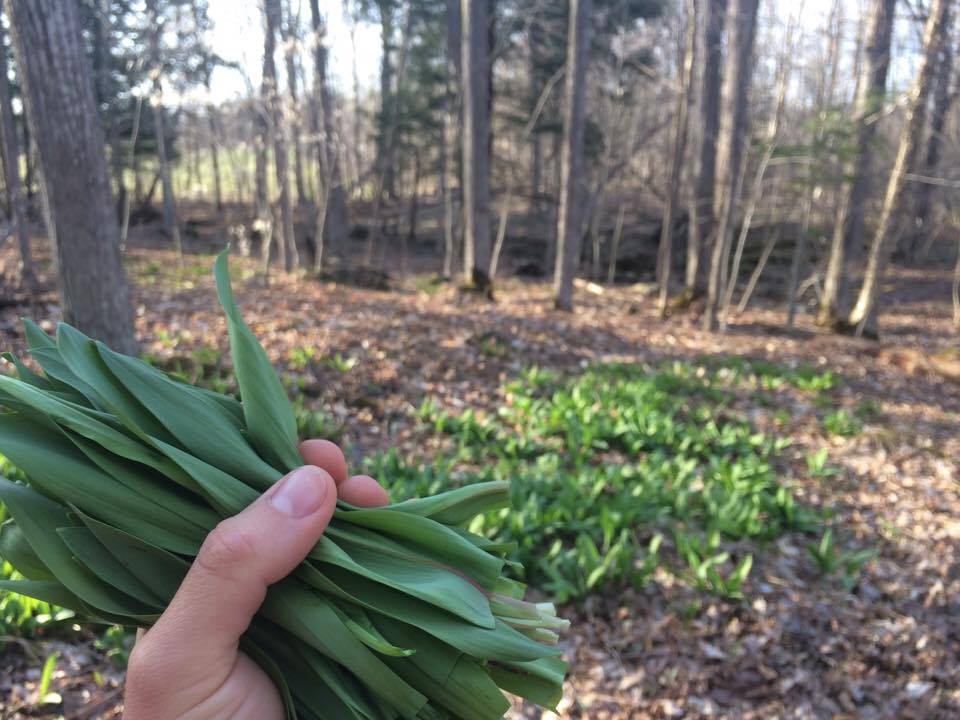
Photo: Emlyn Crocker
To identify ramps, look for thin, flat, green leaves which are translucent in direct sunlight. Growing to around 12 inches high, they have two to three leaves per plant, often with maroon stems that turn white closer to the bulb. Break a leaf and take a sniff: it should give off a strong garlicky, oniony smell. Take care when identifying: Lily of the Valley looks very similar but is inedible. Lily of the Valley has thicker leaves that grow close in a swirl at the base of the plant. If you’re unsure, steer clear and don’t risk it.
Recently, demand for ramps has grown exponentially, and ramp populations are depleted in many regions. Ramps have a 7-year cycle from seed to maturity, and populations take a long time to recover from overharvesting. It’s important to practice sustainable harvesting techniques to make sure that ramps remain abundant. The best way to sustainably harvest is to cut the greens at the base of the leaf and take only one leaf per plant. Leave the bulbs in the ground to regenerate, and make sure you harvest from a well-established patch. If you’re set on harvesting bulbs, a good rule of thumb is to collect 10% or less of the plants you see.
Traditional methods of preparing ramps are to first wash the leaves, then fry them up and serve with scrambled eggs, bacon, potatoes, or alongside fish.
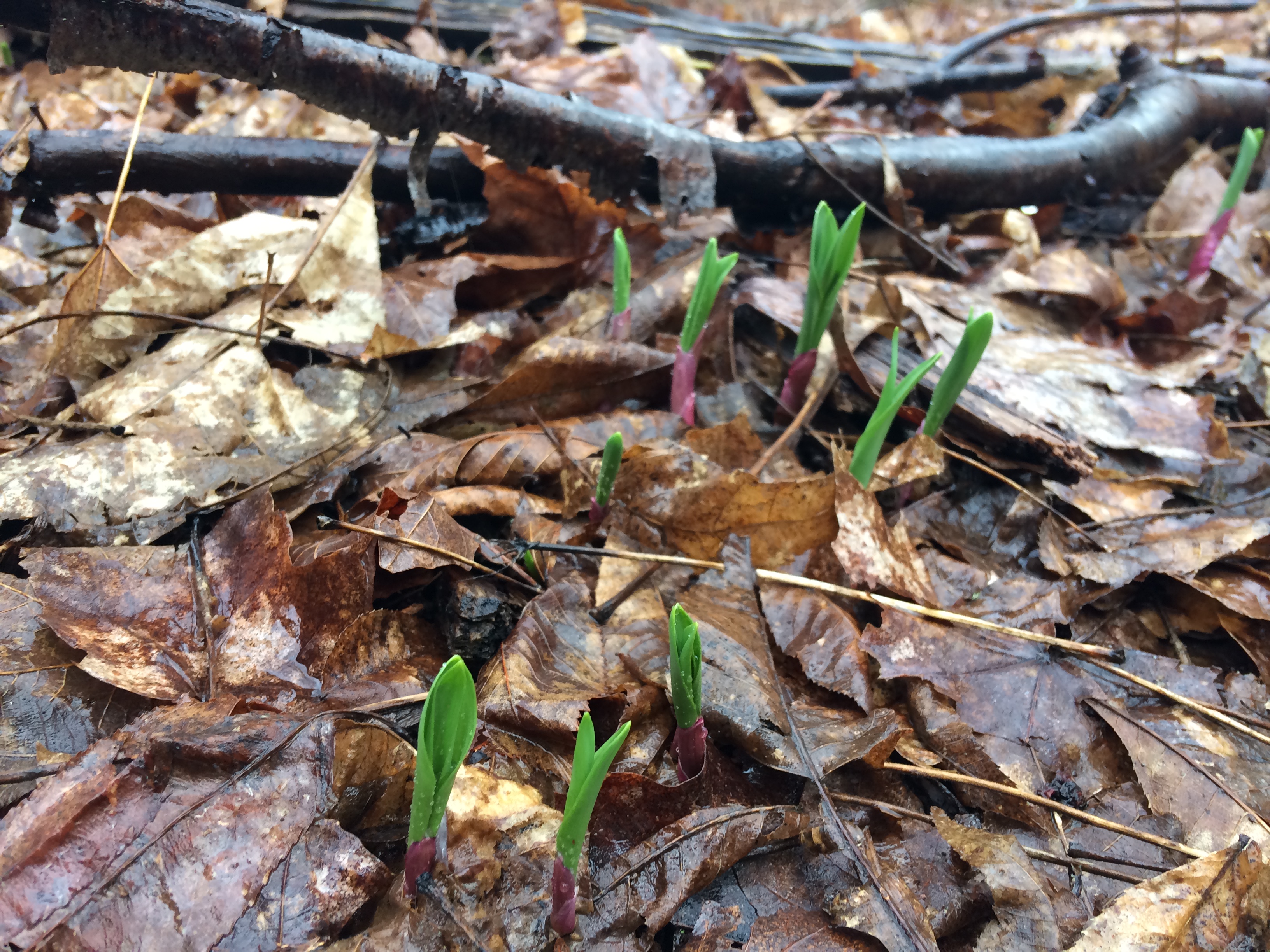
Photo: Emlyn Crocker
Garlic Mustard
Garlic mustard is best known as an invasive plant which has overtaken many North Country forests. Native to Europe and North Africa, its lack of natural control mechanisms in the United States lets it spread quickly across large areas, outcompeting native tree and wildflower species. Garlic mustard releases chemical compounds into the soil around it that inhibit the growth of its competitors, which helps it to quickly dominate the area where it grows. Although it lacks animal predators, humans can help mitigate the spread of garlic mustard by harvesting it. Check out this blog by past Nature Up North project manager Jacob Malcomb to learn more about this invasive species and how to help reduce its spread.
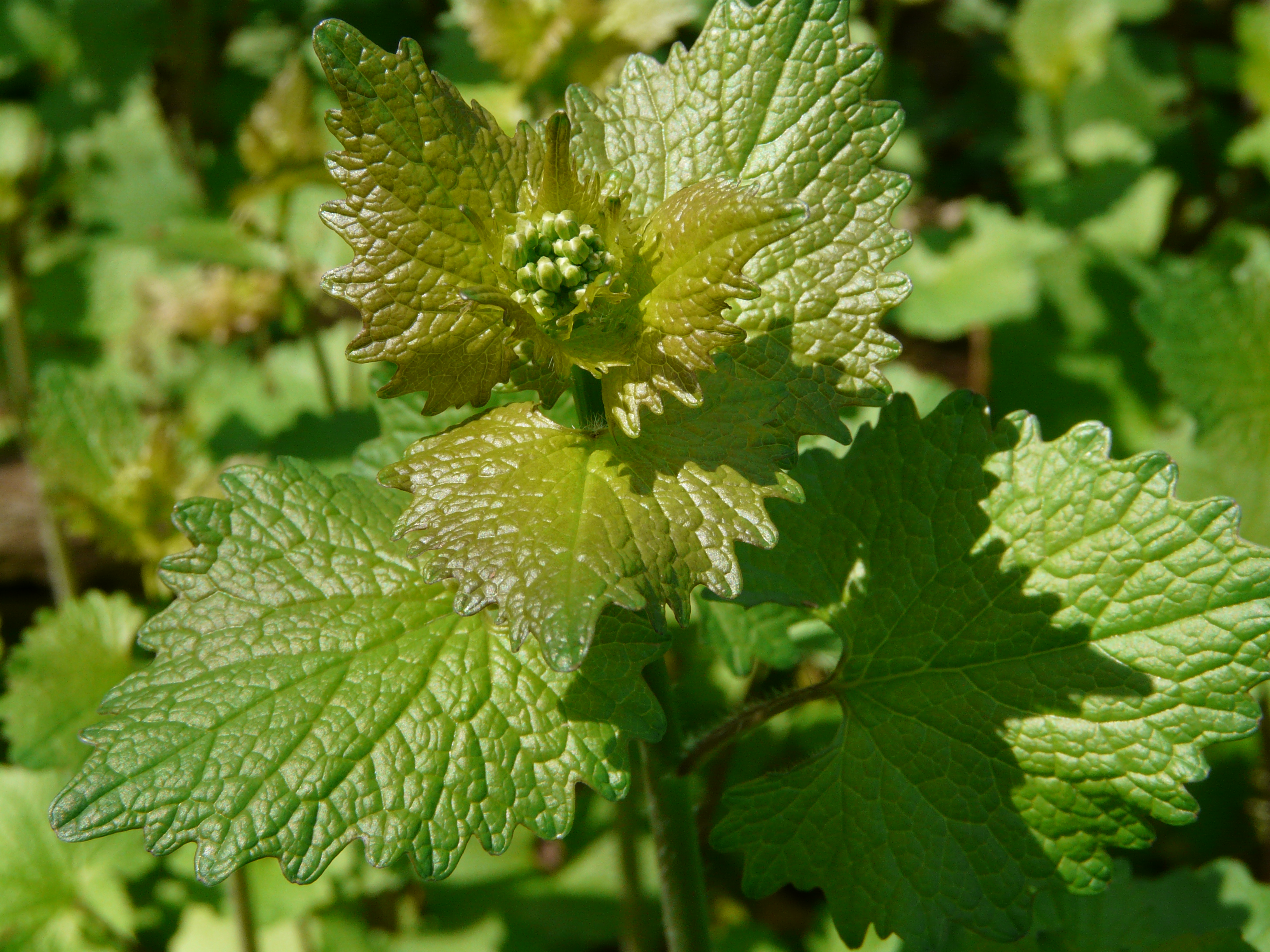
Photo: Jake Malcomb
To identify garlic mustard, look for scalloped leaves that grow opposite one another on stems. In their first year of growth, they grow in circular clumps with rounded, heart-shaped leaves and purple stems. On mature plants, the leaves become more coarsely toothed, and they typically are 3-4 feet tall. In early spring, small white flowers with four petals appear at the top of the stem. Break a leaf in half or rub two together; it should give off a garlicky smell.
High levels of vitamins A and C, zinc, carotenoids, and fiber make garlic mustard one of the most nutritious greens available. It can be added to a variety of sauces, salads, stir-fries, and pesto, giving an instant boost of nutrients. To prepare, it is best to either boil or blanch the leaves, or marinate them in apple cider vinegar and honey to cut down on bitterness and to remove lingering toxic compounds. Then the leaves can be used in any recipe where a garlic or onion flavor is wanted, or as a spinach replacement. Our favorite way to use garlic mustard is in this tasty pesto recipe.

Photo: Emlyn Crocker
Fiddleheads
Although fiddleheads of many of species can be found in woods and along roadsides, the edible variety, ostrich ferns, are a little trickier to find, with those in the know guarding their secret fern harvesting spots. Search near streambeds or in damp areas of the woods in late April or early May and you just may stumble upon a spring delicacy. Before harvesting, make sure to positively identify the ostrich fern— most other fern species aren’t edible to humans.
Ostrich fern stems have deep, U-shaped grooves down the center, and when young will have a brown, paper-like covering over the spiral. They have a smooth outer layer, which sets them apart from the more common bracken ferns, which are covered in brown fuzz.
To harvest, cut only one or two coils a few inches down the stalk from each plant. Make sure to cut plants that are between two and six inches tall, and have at least three or four stems per crown.
One of the first local vegetables of spring, fiddleheads have a flavor similar to asparagus and artichokes, along with a hearty dose of nutrients like vitamins A and C, niacin, minerals, fiber, and omega 3 fatty acids. They must be boiled for 10-15 minutes for 10-15 minutes before being eaten to kill any bacteria or toxins, and can be used in a variety of dishes, generally in the same way you’d use asparagus or broccoli. They are often sautéed with butter, garlic, and salt and pepper and eaten as a tasty side dish.
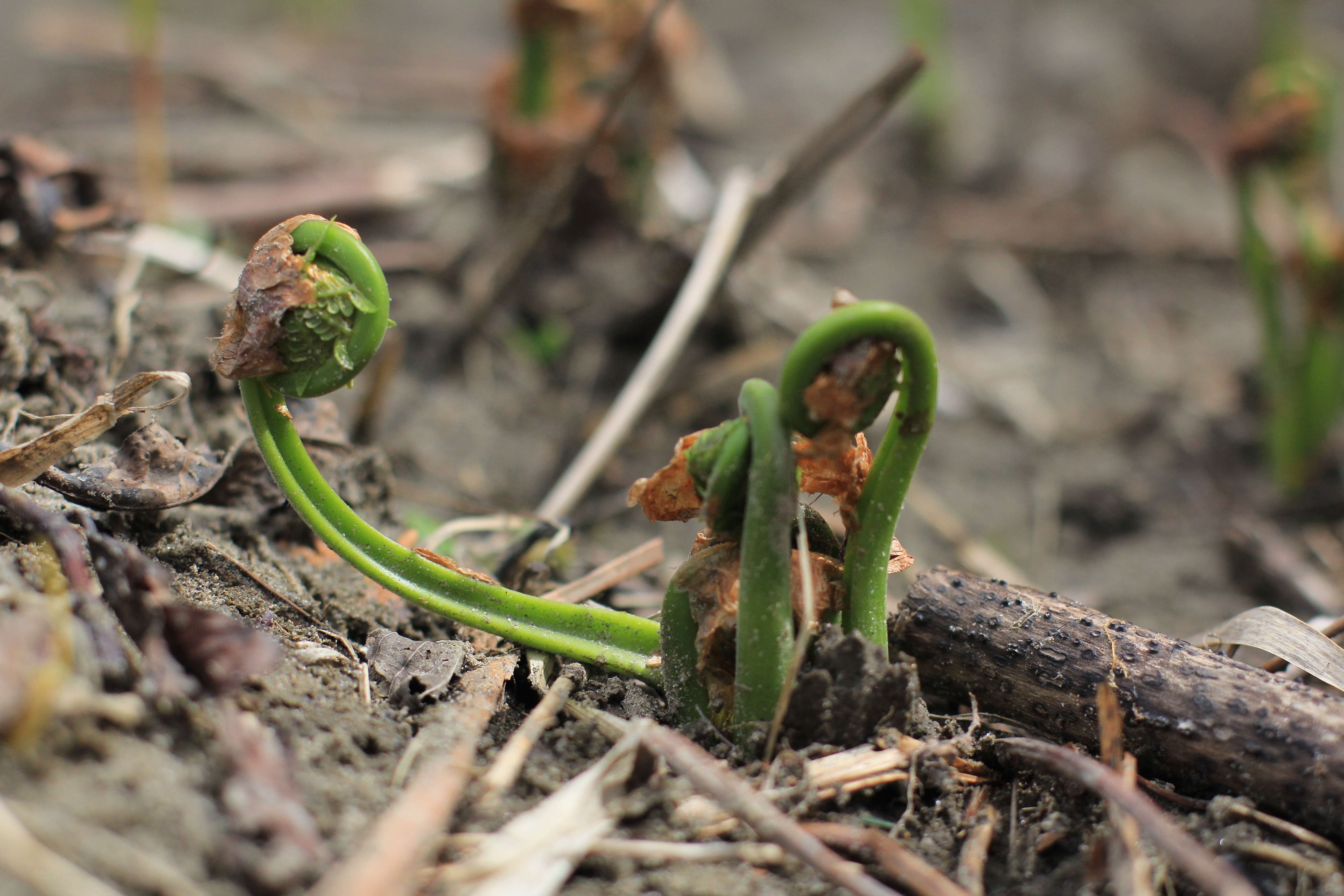
Photo Priya Jaishanker, Flickr Creative Commons
Dandelion
It sprouts in nearly every yard, but you might not know that the common dandelion can be eaten as a spring delicacy. A fun fact about dandelions is that their name originated from the French phrase “dent de lion” or “teeth of the lion,” from the long, pointy shape of their petals. Dandelions have a single thick stem, which emits a milky liquid when broken, topped with a globe-shaped yellow flower made up of many tiny petals. They have smooth green leaves with spiky edges that grow close to the ground. Beyond their benefits to humans, they are often the first available food source to bees and butterflies in the spring-- leave them growing in your lawn to help out our flying friends!
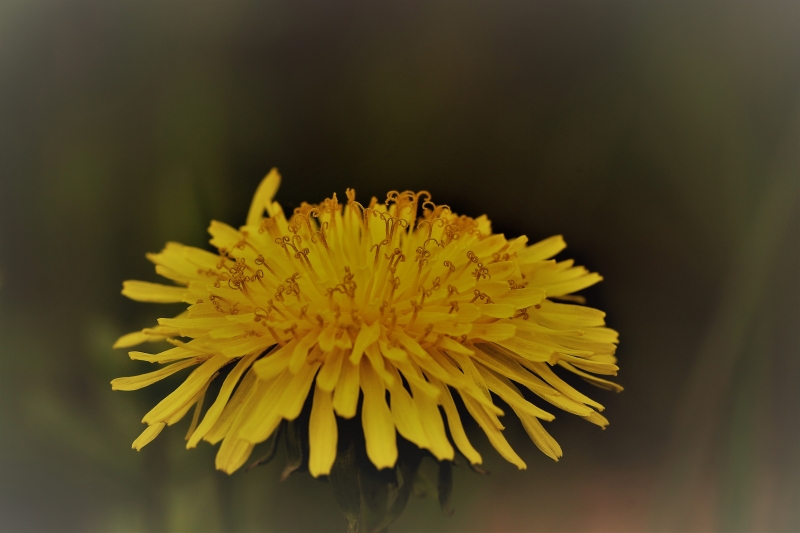
Photo: Deborah Champagne, natureupnorth.org
Another reason to leave them growing is that many parts of the dandelion are edible. Tea can be made from the taproot which is known to cleanse the liver and aid with digestion. First clean the root, slice and peel the skin, then boil or roast in the oven. The leaves contain vitamins A and C, riboflavin, thiamine and ascorbic acid, as well as calcium, sodium, and potassium. After washing, add them to salads for a burst of local, fresh greens. Their petals can be used to create tasty veggie burgers.
Please remember to respect these plants and their habitats by harvesting sustainably, and share your foraging success and favorite wild edible recipes with us at natureupnorth.org/encounters. Good luck and happy foraging!

This is awesome and looks like they would make any dish tasty and nutritious!